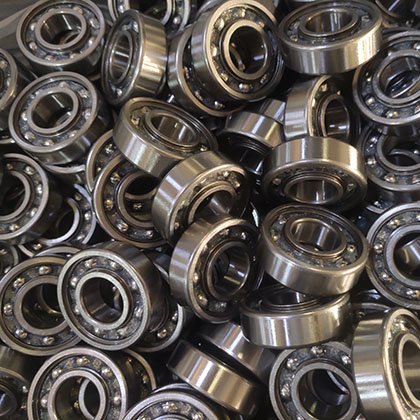
How to measure bearing
To measure a skateboard bearing, you will need a caliper or ruler. Here are the steps to measure a bearing:
NSAR group company and have our own factories overseas
NSAR bearings management team of managers, engineers, and technical staff have 15 – 25 years experience. We supply customers with bearings not only produced in our own factory, but also produced in professional bearings plants designated by NSAR brand to meet customers’ different requirements, such as pillow block bearings,we have designated a factory in northern China, which has perfect testing equipment and can develop products to customer needs very rapidly. Miniature bearings are arranged in the factory in southern China, which has enjoyed a good reputation long term in producing miniature bearings.
As a professional factory that produces professional products, with professional people doing professional things, our foreign customers have declared: “NSAR bearings have reached a domestic first-class and international brand-name quality, and NSAR bearing prices are 30-50% lower than international similar bearings.”
NSAR, a professional 6000 bearing supplier in China, provides a broad variety of 6000 bearing with best customer service and quality assured. With more than 20 years 6000 bearing manufacture experience, our 6000 bearings has been exported to United States, Canada, Mexico, Brazil, Argentina. NSAR can satisfy your bulk 6000 deep groove ball bearings customization needs,We provide 6012 bearing and 6200 bearings series and 6300 bearing.you can products download.
1. Outer Diameter (OD):
– Measure the diameter of the outer edge of the bearing. This is the outer diameter, which determines the size of the bearing’s outer ring.
– Place the caliper jaws around the outer edge of the bearing and measure the distance across. If using a ruler, align it with the outer edges of the bearing and read the measurement.
– Record this measurement in millimeters (mm). The standard outer diameter for skateboard bearings is typically 22mm.
2. Inner Diameter (ID):
– Use the caliper or ruler to measure the diameter of the central hole in the bearing. This is the inner diameter, which determines the size of the bearing’s inner ring.
– Place the caliper jaws inside the central hole of the bearing and measure the distance across. Alternatively, if using a ruler, align it with the edges of the central hole and read the measurement.
– Record this measurement in millimeters (mm). The standard inner diameter for skateboard bearings is typically 8mm.
3. Record Measurements:
– Note down the measurements for the inner diameter, outer diameter, and width. Ensure accuracy by double-checking the readings.
– Record the measurements in millimeters (mm) for future reference when searching for replacement bearings.
4. Width:
– Measure the thickness of the bearing from one side to the other. This is the width of the bearing, which determines its profile.
– Place the caliper jaws across the width of the bearing, ensuring they are parallel to each other. Measure the distance between the two sides.
– Record this measurement in millimeters (mm). The standard width for skateboard bearings is typically 7mm.
5. Compare with Standard Sizes:
– Once you have the measurements, compare them with standard skateboard bearing sizes. The most common standard size for skateboard bearings is 8mm (inner diameter) x 22mm (outer diameter) x 7mm (width).
– If your measurements closely match these standard sizes, it indicates that your bearings are likely within the standard specifications.
6. Check for Accuracy:
– After taking the measurements, double-check them to ensure accuracy. Repeat the process if necessary to confirm the consistency of the measurements.
– Accurate measurements are crucial for finding compatible replacement bearings for your skateboard.
7. Maintain Accurate Records:
– Keep a record of the measurements for future reference. This will be helpful when purchasing replacement bearings or if you need to reference the measurements later on.
– Accurate records ensure that you can quickly and confidently identify compatible bearings for your skateboard in the future.
8. Seek Expert Advice if Needed:
– If you’re unsure about the measurements or compatibility, don’t hesitate to seek advice from experienced skateboarders or professionals.
– Local skate shops or online forums can provide valuable insights and guidance to help you find the right bearings for your skateboard.
9. Confirm Compatibility:
– Before purchasing replacement bearings, verify that the measured dimensions are compatible with your skateboard’s wheels and axles.
– Ensure that the inner diameter matches the size of your skateboard axles, and the outer diameter fits within the wheel hubs without any issues.
– Check that the width of the bearing is suitable for the wheel hubs and does not exceed the available space.
By following these steps, you can effectively measure skateboard bearings and ensure compatibility when selecting replacement bearings for your skateboard. Accurate measurements are essential for maintaining optimal performance and safety while skateboarding.

